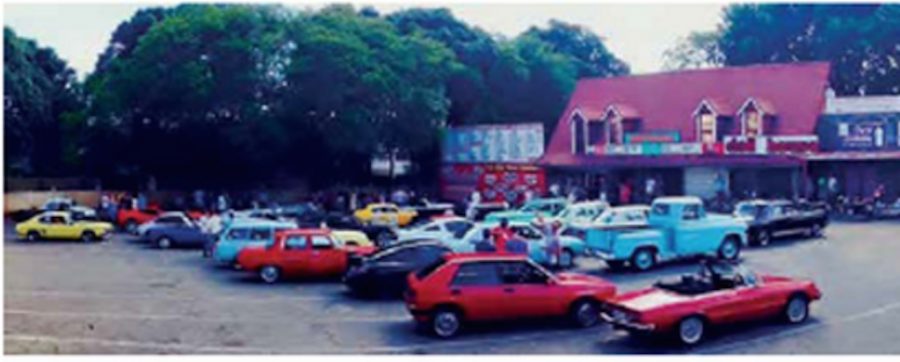
“Ag Pleeze Deddy” and Other Tales from Orange Grove
For anyone from who remembers the Doll House, the drive-in, Springbok Radio, the Radium, Highlands Park and “Ag Pleeze Deddy”, here’s a big old blast from Johannesburg’s past. For those who don’t, the abovementioned would be 1) a roadhouse, 2) an outdoor moviehouse, 3) the radio version of MTV, 4) a beer hall, 5) a football club […]
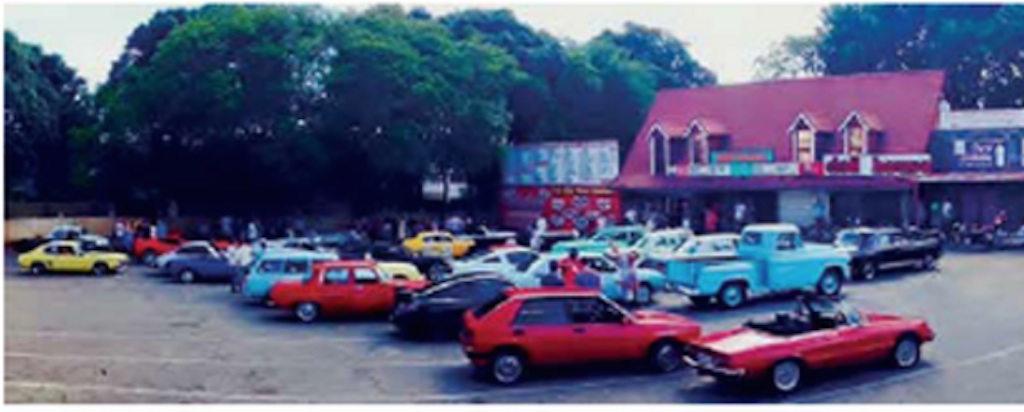
For anyone from who remembers the Doll House, the drive-in, Springbok Radio, the Radium, Highlands Park and “Ag Pleeze Deddy”, here’s a big old blast from Johannesburg’s past.
For those who don’t, the abovementioned would be 1) a roadhouse, 2) an outdoor moviehouse, 3) the radio version of MTV, 4) a beer hall, 5) a football club and 6) a seriously South African popcorn-chewing-gum song.
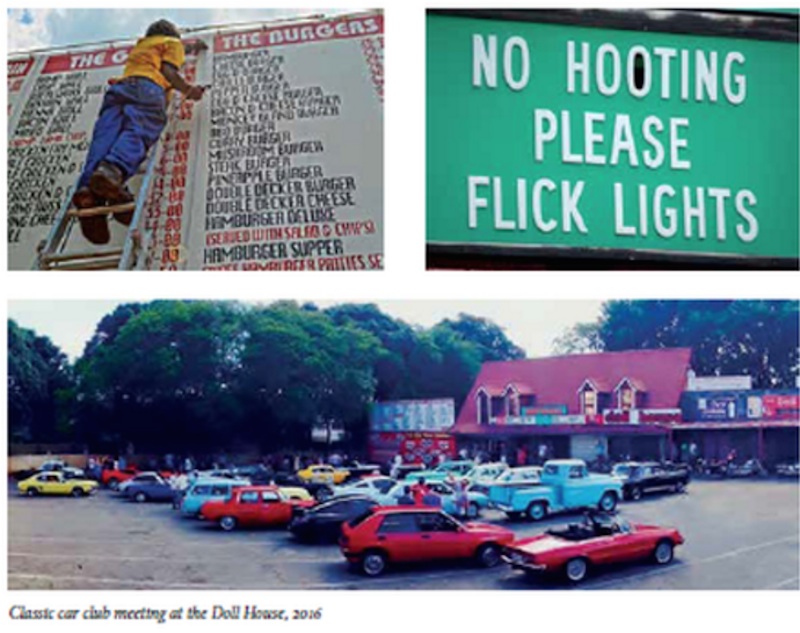
In more than 200 pages of amazing photographs and stories, the coffee table book “The Road through the Grove” – Orange Grove, that is, and more specifically, Louis Botha Avenue – pulls it all together, those days, songs and people of the 1950s, 60s, 70s and after. The authors call it “an illustrated voyage through music, friendship and adventure”.
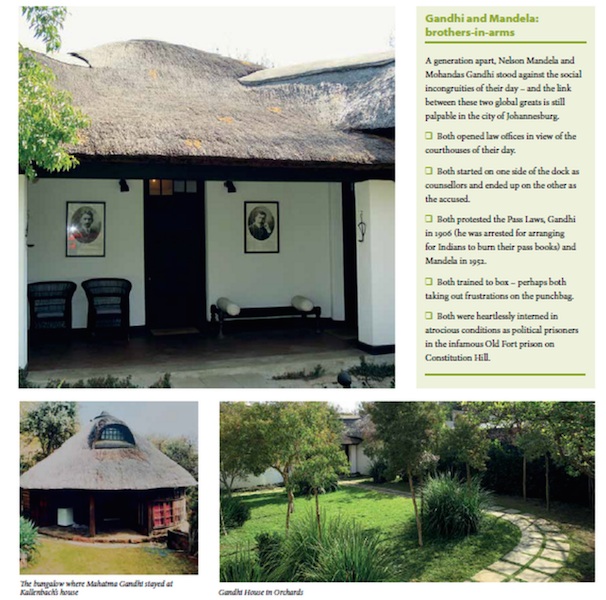
“Lined with shops and eateries, and alive with music and romance, it was the backdrop to a melting-pot of working-class people, many of them with roots in Europe, who had made their homes in Orange Grove and the surrounding suburbs,” the author says.
For the compiler of the book, John Burgess, and for his friends and others growing up along Louis Botha, it was all about swapping comics, marbles, hula-hoops, hitch-hiking, bunking school, the sessions and socials, midnight movies, clubbing and music – regardless of individual cultural backgrounds.
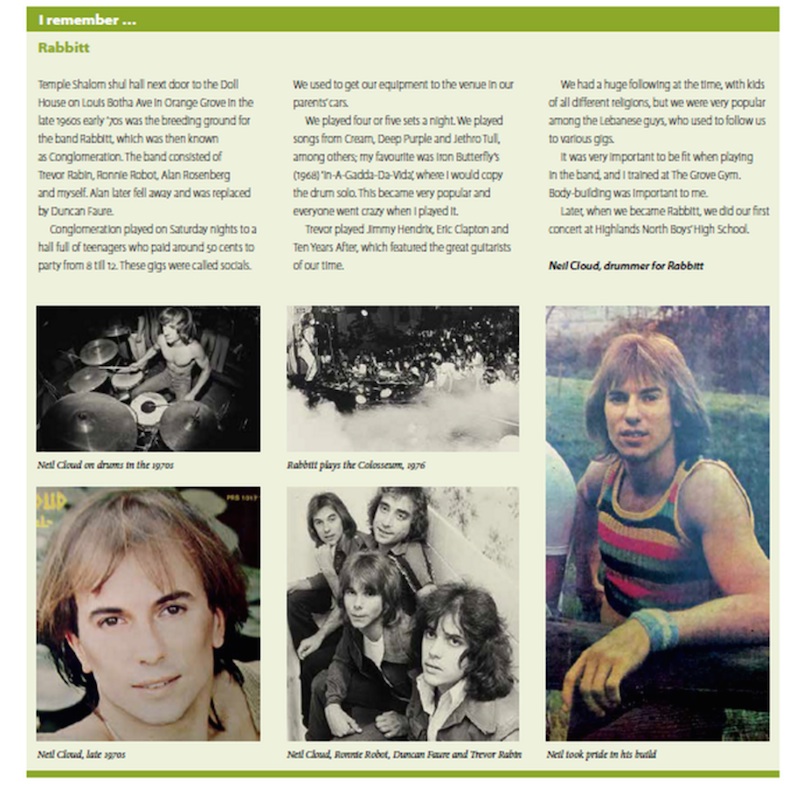
Burgess has collected some of the tales from this time and place, told by the people who were there, played there, maybe left for bigger pastures. From Manfred Mann to Trevor Rabin and Rabbit, from the Wanderers, businessmen like Rodney Sacks and Hilton Schlosberg, body builder Ray McCauley, the sportsmen, the cartoonist Trevor Romain.
This excerpt from “The Road through the Grove” is by Stephen “Sugar” Segerman, “the guy who found Rodriguez”.
Life on Louis Botha
Louis Botha was similar to the main streets in those American towns that we saw in the movies like American Graffiti, the ous and their chicks driving up and down parking off at the Doll House, sitting behind the goals watching Highlands Park… and all the different nationalities-Greeks, Lebanese, Jews, English,Portuguese, Afrikaans – living together, going to school together, partying together and growing up together along this road.
For us Emmarentia boys in our quiet little suburb all the excitement seemed to be happening along Louis Botha Avenue. There was always exciting stuff going on along that strip and for us a great night out was cruising along Louis Botha with the sound in the car at full volume. Initially it was just radios in our cars with basic aerials that gave you decent FM reception,which had uncool stations like Springbok with no decent rock music, or the far more exotic music on crackly shortwave like LM or Capitol radio from the Transkei.
Then followed the short era of eight-track tapes with very clear sound; most desired in the format were albums by the Rolling Stones, the Doors and Credence.
Soon after came cassette players which meant that we could play copied tapes in our cars-and that was when it all came together. Heading of to see Conglomeration with Trevor Rabin on guitar or to catch one of the Saturday night socials at Temple Shalom. Slow dancing with the lekker Highlands, Northview and Orange Grove chicks to the Flames “For your Precious Love” or “Wild Horses” by the Stones. Going to the Spur at Balfour Park or the Black Steer nearer Harrow Road for a burger or just parking at the Doll House eating fries and drinking milkshakes and listening to Pink Floyd or Deep Purple or Cream or Yes on your car stereo.
And always and everywhere was Rodriguez, playing on car stereos at parties in the bedrooms “Sugar Man”, won’t you hurry cause I’m tired of these scenes…
